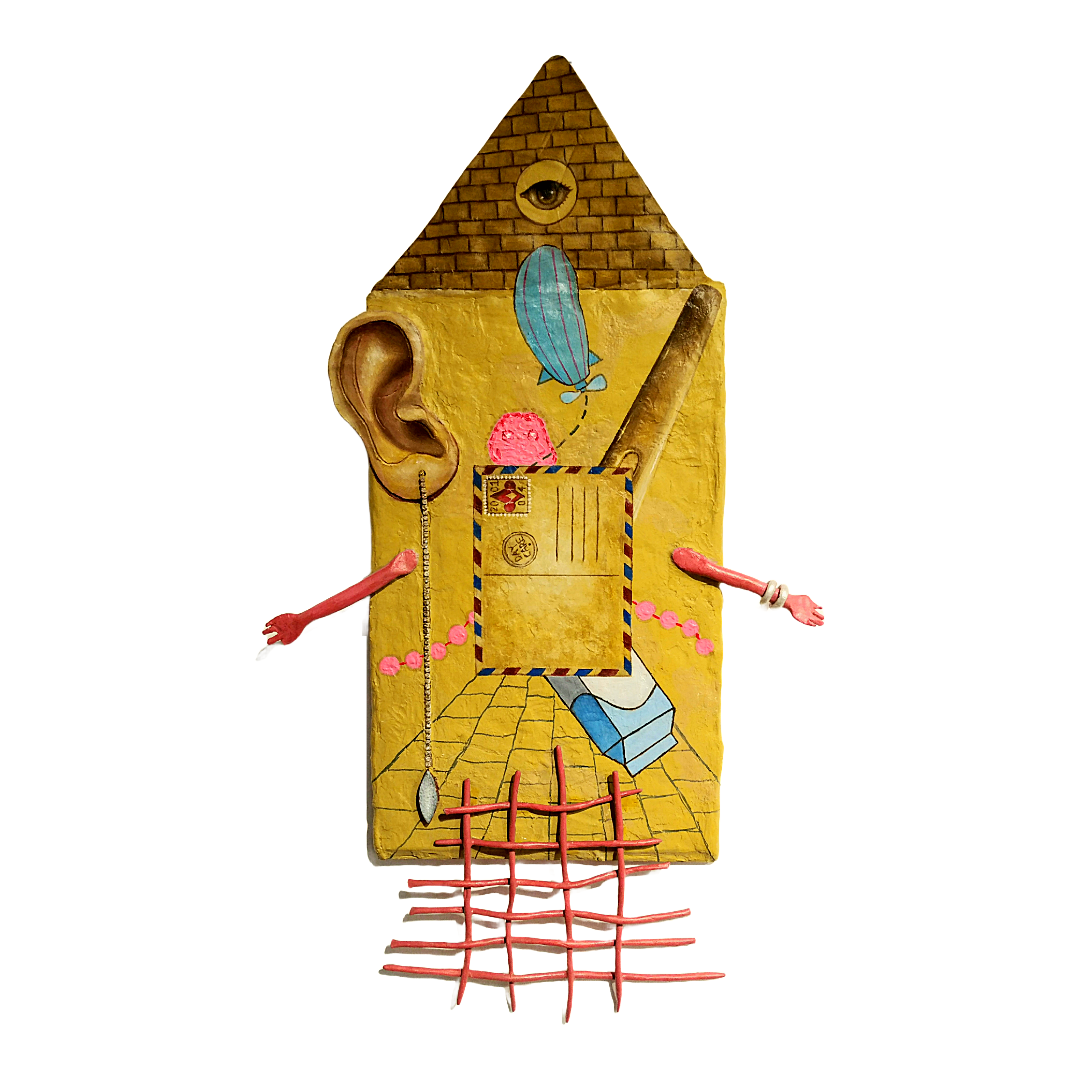There are as many human selves as there are individual people
The works of Ayesha Maheen focus on the female experience; filled with imagery and symbolism, they try to convey the inner psychological aspects of being a woman and the traumatic experiences associated with it. Her paintings open the window to a female world, showcasing her pleasure and pain, her expectations from the world and the reality that encompasses her. Her works have evolved with her personality. They also hide and reflect, simultaneously, the trauma that she experienced as a child. The color choice by the artist has been diverse, with vibrant colors on one side and the gloomy shades of green and yellow on the other. The contrast in the colors unveils the tapestry of her personality and experience, which she tries to extend to the general life of all women. The use of red has been a vivid expression of highlighting tabooed subjects. She tends to show women bodies through the colors and the hierarchy of presence in society.
Marilyn French says, there are as many human selves as there are individual people. Ayesha, in her work, presents many selves through her disjointed characters in the paintings. In a patriarchal society, women are measured by the abstract concept of virtue imposed by men through which they seek to maintain their domination over women. While she (the woman) makes her tower of virtue, the imagined or real foot crumbles it. She cannot find an escape to a world where the compass is consistently pointing toward her, with center being the male figure. Ayesha brings back the center to ‘the woman’ and represents her inner world in her work.
Moreover, psychological experiences shape self-perception and the worldview of a person. The green room gives a message of the gloominess, and the disjointed elements in the paintings are a testament of how, slowly and gradually, the act of putting women in several cliché concepts ends in the loss of a coherent self. The silent messages and gestures aimed at the female collectively form the trauma that she experiences. The representation of forsaken female voice has been presented as old and crumpled letters in the paintings crumpled innocence, dear diary and forsaken pleas. Karen Horney signifies in her theory the ‘symbolic castration’ of women leads to the internalized sense of inferiority and acceptance of subordination by them. Women, all their lives, struggle to balance between the three pulls: the self-efficacy pull, the resigned pull and the expansive pull. This has a psychological toll on the female, where she has to assert her individuality and at the same time, cooperate and comply with the societal expectations of her.
The gloominess of the colors in the works also tends to take the viewer back to the trauma that the artist experienced in her childhood. The artist takes her personal experiences and translates them into images that reflect the innocence of childhood and bring attention to the exploitation of it. This has given the artist the power to bring to attention the silent epidemic of childhood sexual abuse and the often-invisible aftermath of complex Post Traumatic Stress (cPTSD). Her work, mainly has playfulness in it with characters that are appealing and attractive enough for the viewers to engage with. This technique is aimed at bringing the spectator to enter the inner world of the child, engage with it and see the underlying dark in the art presented.
Ayesha has used oil and acrylic in her work. Along with that, she used red tape to include female body and fabric buttons to represent nipples and navels at various points. In the works, the female body is highlighted with the red and orange color, to turn the clitoris as the center of female analysis (Kate Millet). By presenting explicit content tabooed by society, the artist facilitates female exploration of her physical and psychological self, aiming to challenge the boundaries of art and representation.
Written by Fatima Kizilbash
Fatima holds a BS Psychology from Alzahra University Tehran and MA English from University of Balochistan. She writes on postmodernism, gender, climate, psychology and trauma. Fatima is currently expanding into fiction storytelling.
Image: Sweet Voyage, Ayesha Maheen, mixed media, all copyrights are retained by the artist, 2025.
